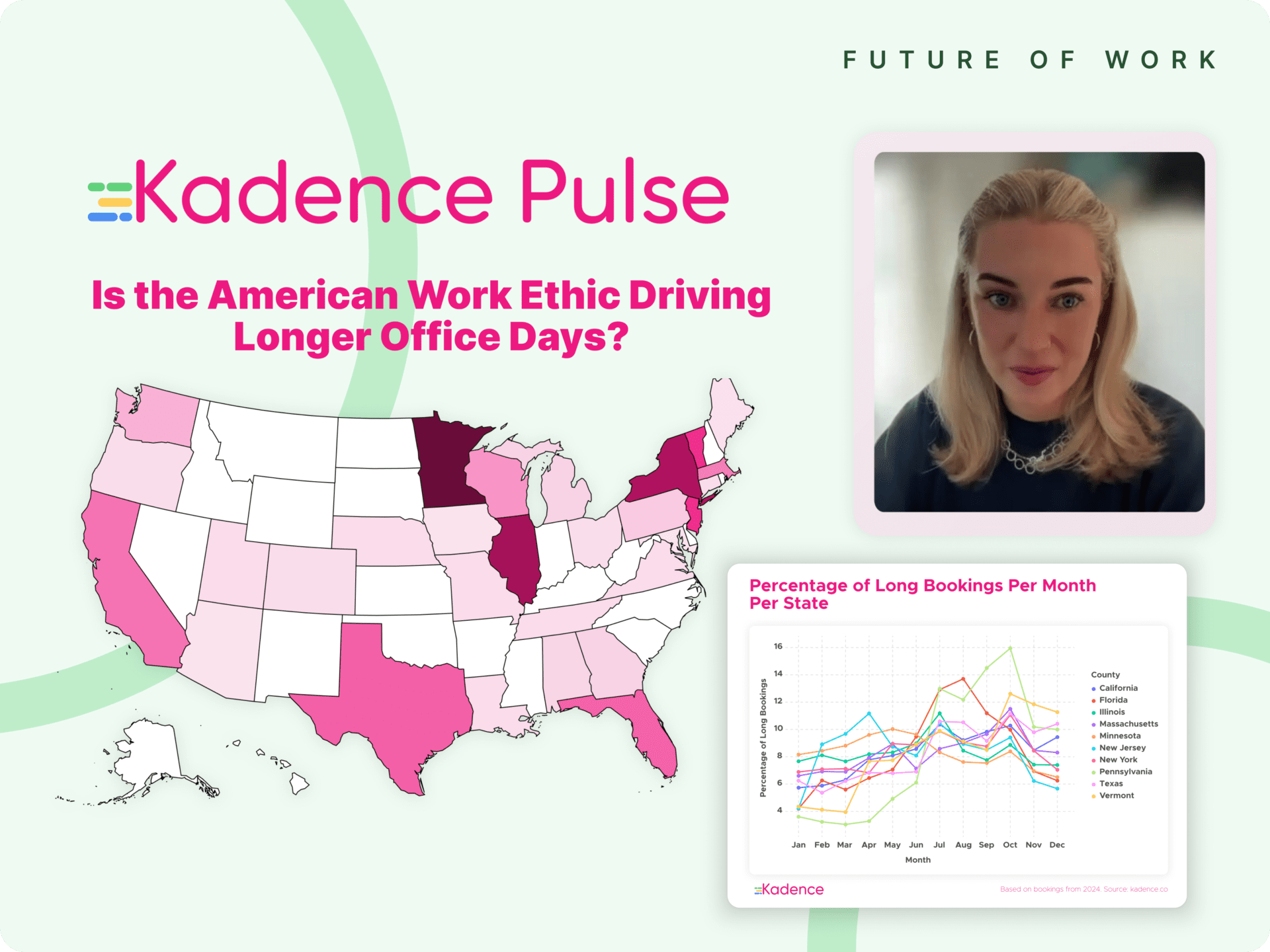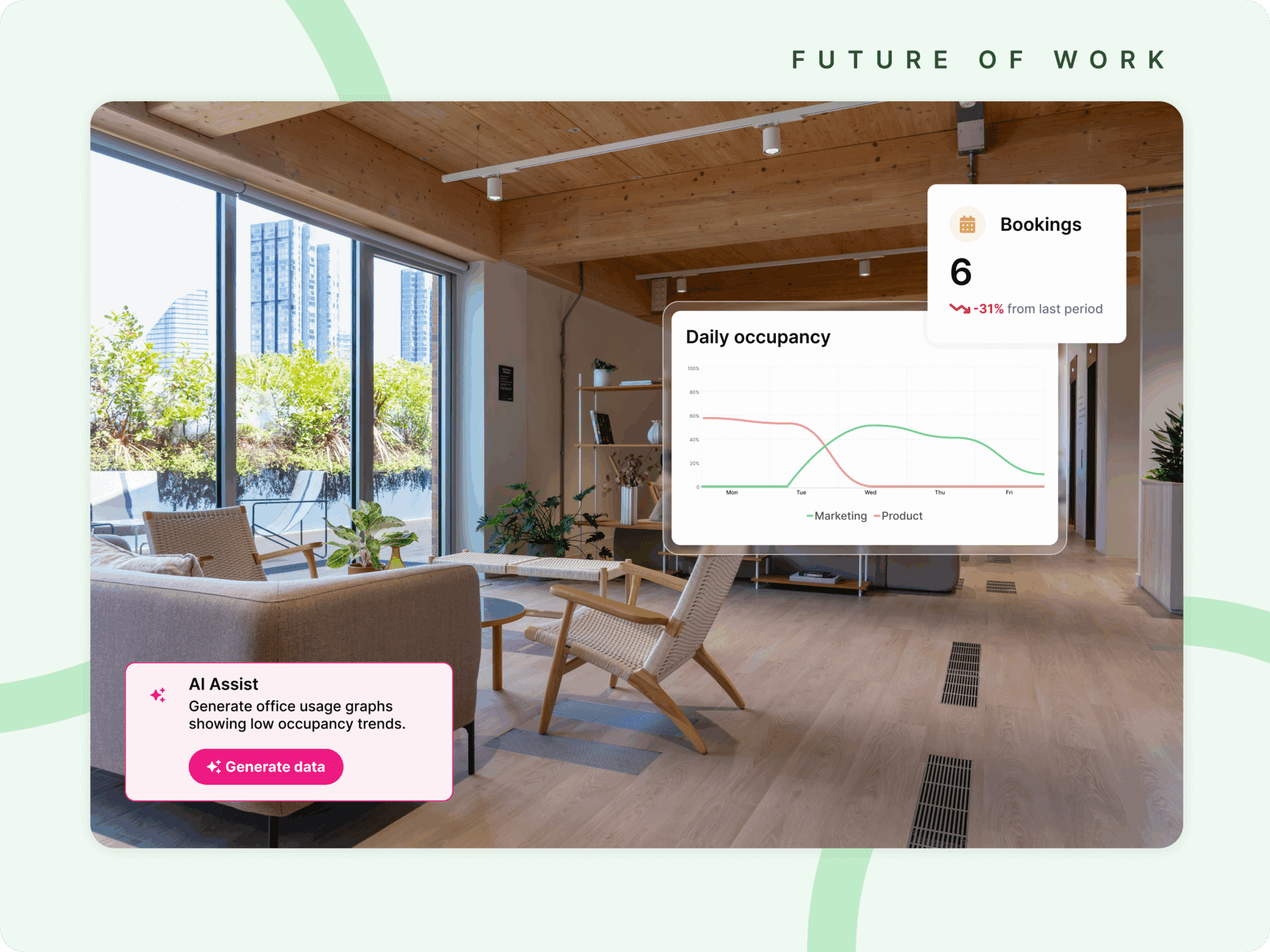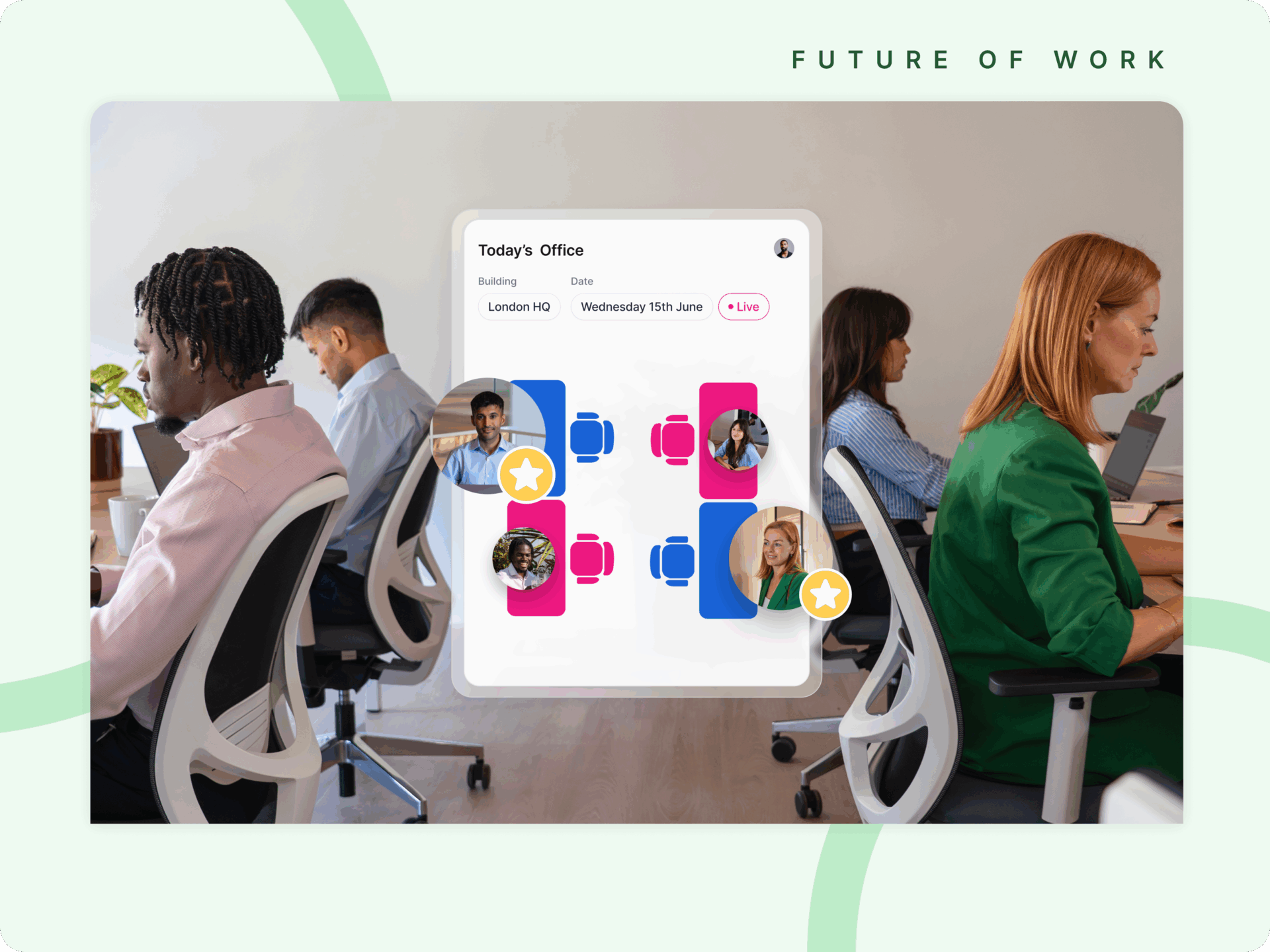Welcome to Kadence Pulse—our regular deep dive into hybrid work trends, behaviors, and insights pulled straight from the data of thousands of our global users. In this edition, we’re turning our attention to the American work ethic. Known globally for its hustle culture, the U.S. is showing a noticeable trend in extended office hours—even in the flexible age of hybrid work. The data tells a nuanced story about who’s staying late, where it’s happening most, and what it says about the way we work today.
The way Americans work is changing, but one thing remains clear—many are putting in long hours at the office. Our latest data dive into hybrid work habits reveals some fascinating trends about where, when, and why employees are booking extended in-office days. While some states see high engagement in long bookings, others show patterns of occasional but concentrated office time. Let’s unpack the numbers.
Americans Are Booking Longer Workdays More Than Anyone Else
A long workday is defined as any booking exceeding eight hours. Our 2024 year-end wrap-up uncovered a striking trend: North America led the world with the highest percentage of long office bookings (8.3%), surpassing Asia (6.1%) and Europe & Australia (2%). Even when isolating just the U.S. from the broader region, the trend holds—the number of bookings exceeding eight hours remains significantly higher than anywhere else.
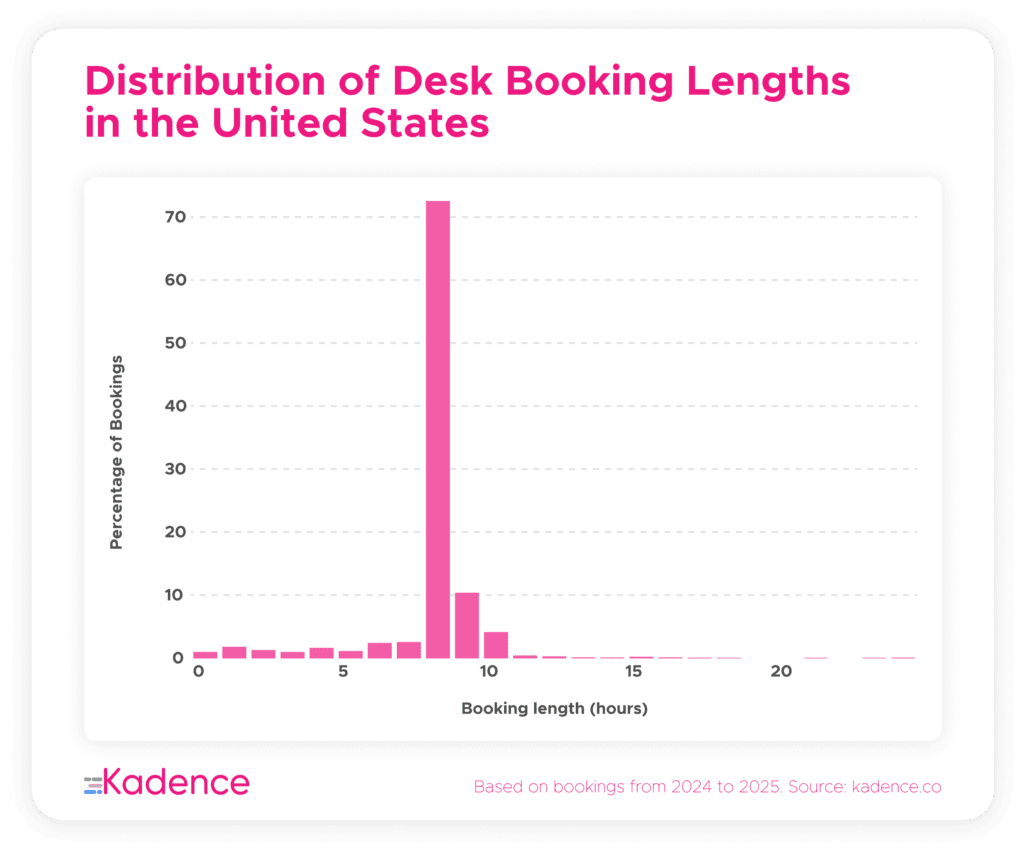
A look at the distribution of bookings in the U.S. confirms that while most reservations hover around the standard eight-hour mark, there’s a substantial number of users extending their in-office time to nine or even ten hours.
Where Are These Long Workdays Happening?
Booking Counts By State
When we analyze where long bookings are taking place, Minnesota, Illinois, and New York emerge as the states with the highest total counts of long bookings.
- Minnesota leads with over 27,000 long bookings.
- Illinois and New York follow closely with 23,000 each.
- Vermont, despite its small size, ranks fourth with 15,000 long bookings—highlighting high engagement in the state.
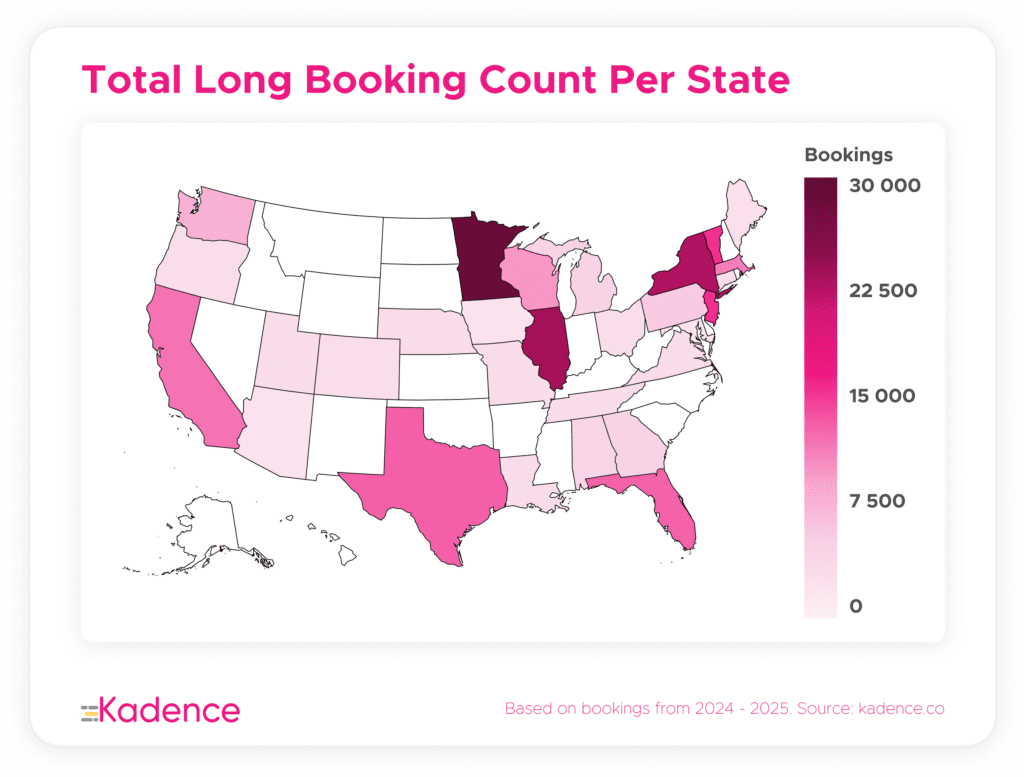
Booking Counts By City
At the city level, major metropolitan areas naturally dominate the rankings:
- New York City
- Montpellier
- Chicago
- Houston
- Boston
These cities are known for their ambitious work cultures, making it no surprise that employees here are logging extended office hours.
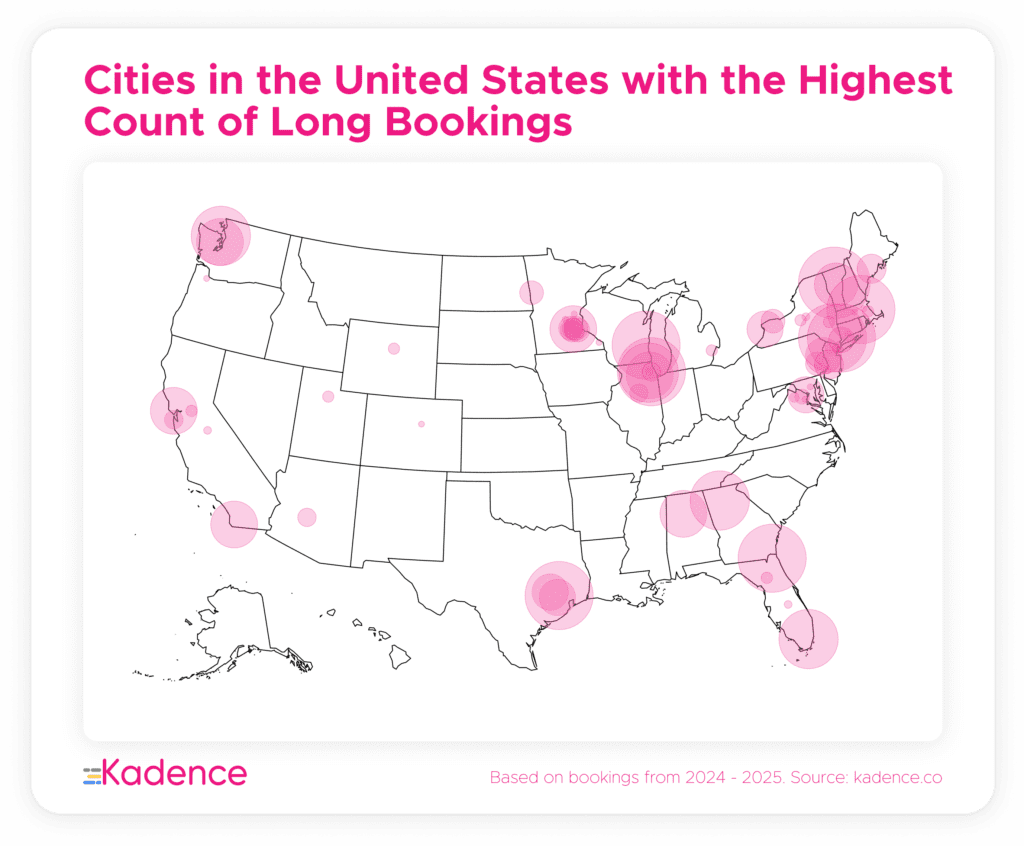
High Booking Counts Could Be Due To High User Counts—So Let’s Look At User Engagement
The states with the most long bookings also have the highest user counts. To understand how engaged workers are, we need to shift focus from total bookings to the percentage of users making long bookings in each state.
User Counts by State
Before diving into engagement levels, it’s worth noting where the majority of users are located:
- New York (3,000 users)
- California (1,600 users)
- Illinois (1,800 users)
- New Jersey (1,200 users)
- Minnesota (<500 users)
- Vermont (<500 users)
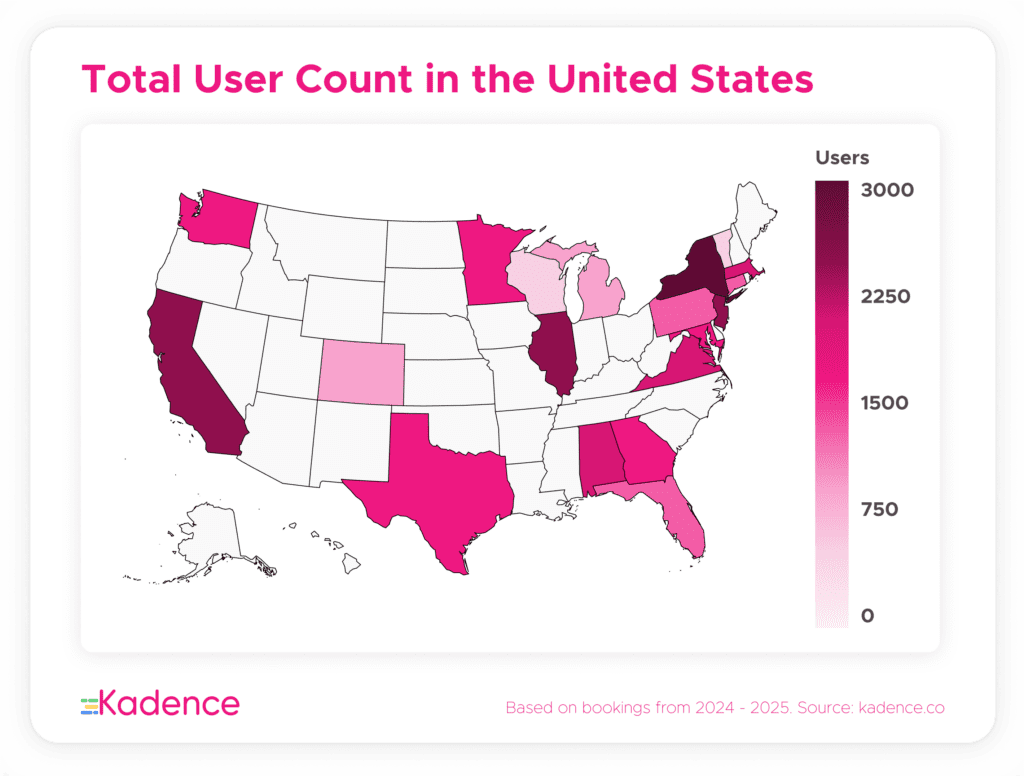
Percentage Of Users Making Long Bookings
- Vermont (84% of users made at least one long booking)—despite a small user base, the state ranks among the highest for engagement.
- Maine, Louisiana, and Wisconsin also show high engagement levels.
- New York, despite having the largest user base, sees only 27% of users making long bookings—reinforcing that sheer volume doesn’t equate to engagement.
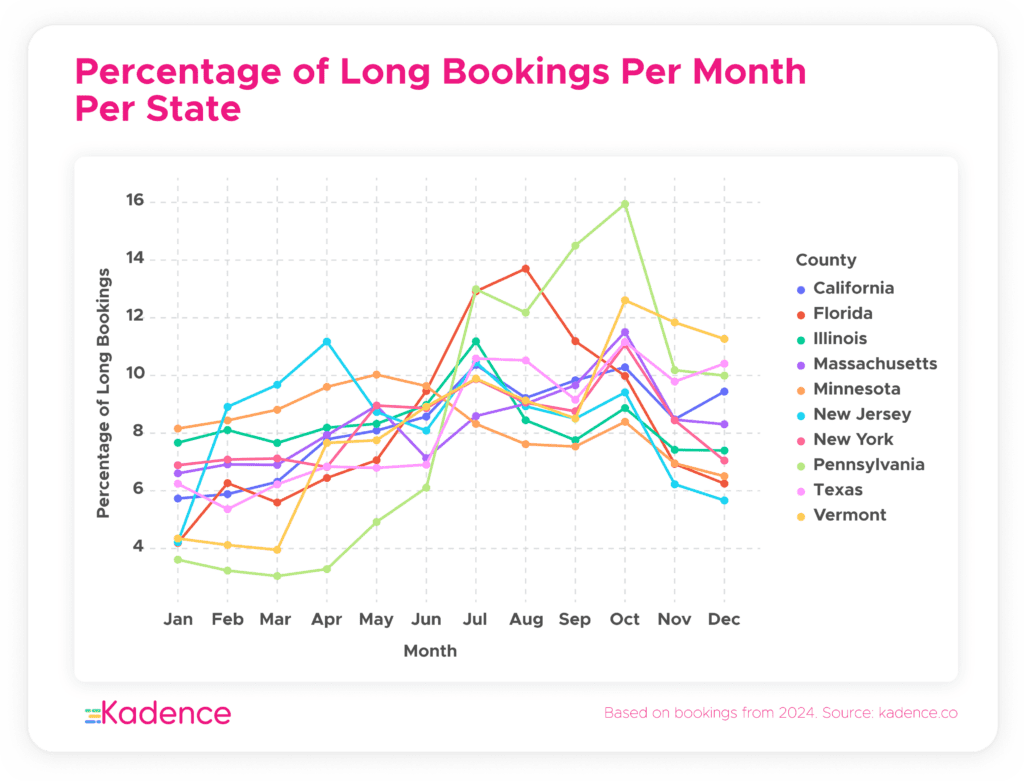
When Are People Booking Longer Days?
Examining the timing of long bookings across the U.S. revealed an interesting seasonal pattern. October emerges as the most popular month for long bookings, with a dip in November and December. The sharpest increase happens in Pennsylvania, but a similar peak appears in most states.
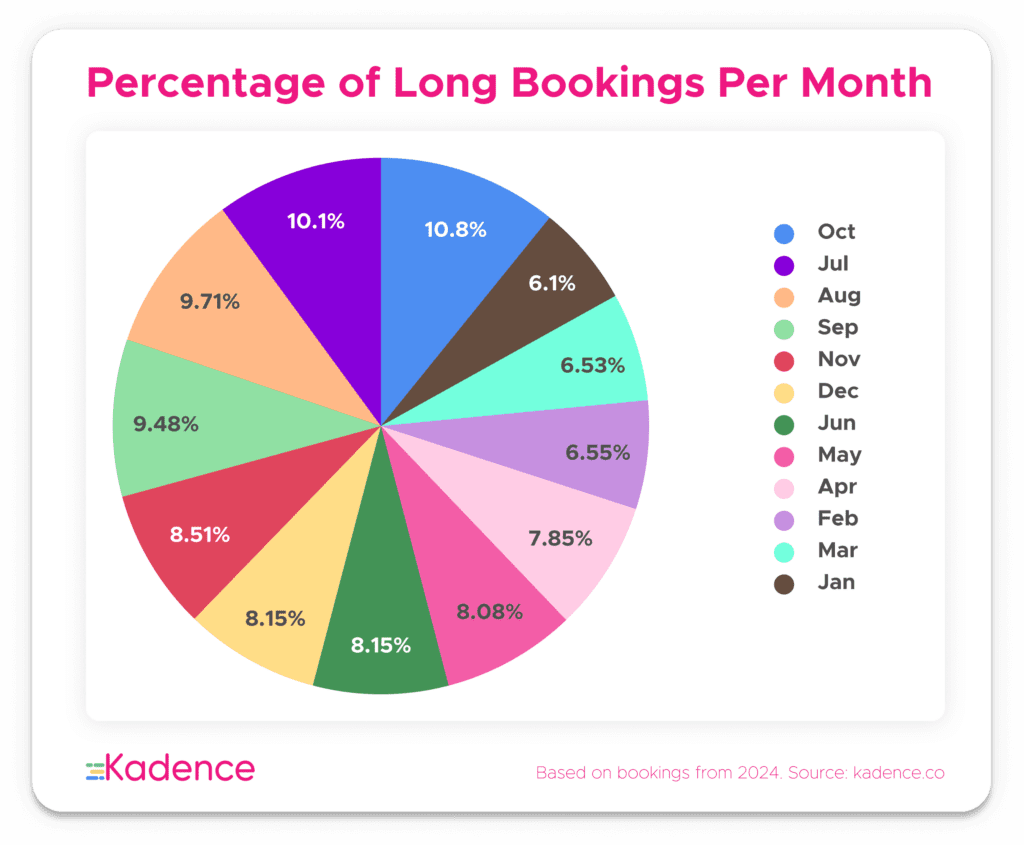
Could this be a result of employees getting in extra work before Thanksgiving and year-end holidays? It’s certainly a possibility.
Final Thoughts: What Does This Mean For Hybrid Work?
1. Long Bookings Are The Exception, Not The Rule
While the U.S. leads in extended office bookings, the majority of employees book only a few long days per year. The data suggests that while long office days are part of hybrid work, they are not the dominant work pattern for most people—a surprising insight given the traditional American work ethic that often equates long hours with dedication and success.
2. Engagement Varies Wildly By State
States like New York and California may have the most users, but that doesn’t mean they have the highest long-booking engagement. Vermont and Minnesota’s workforce demonstrate that smaller states can have outsized participation in extended office work.
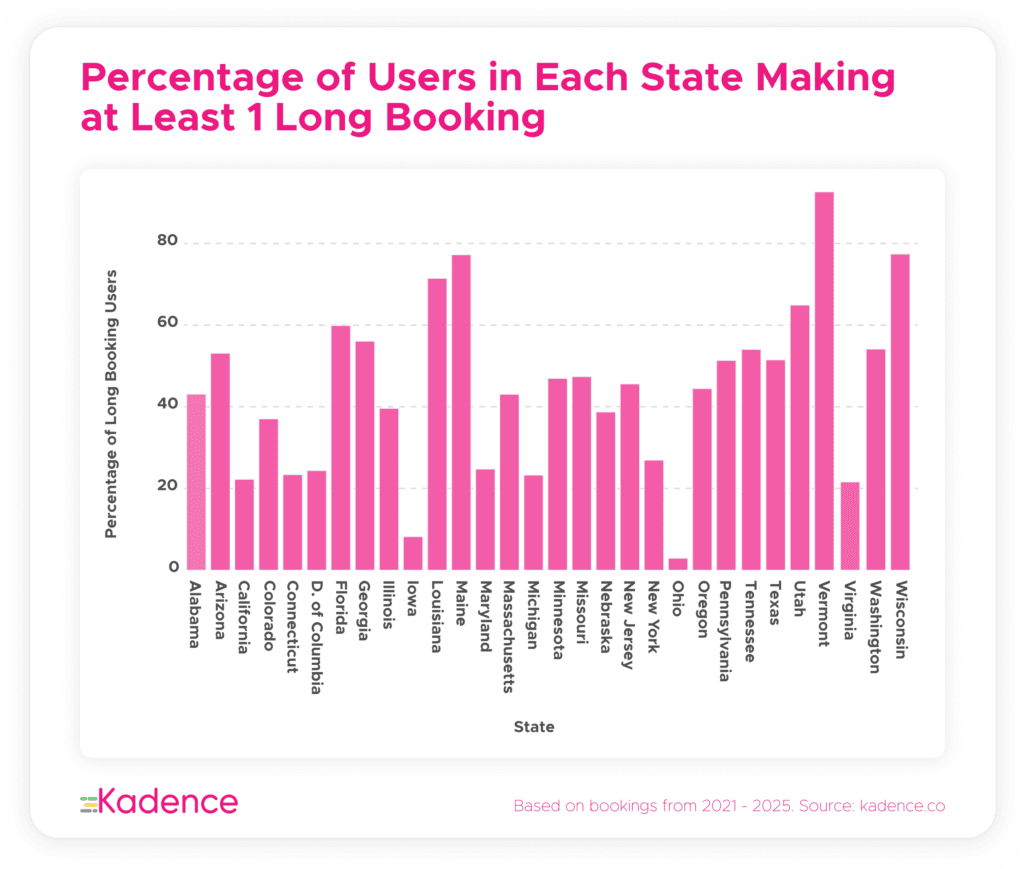
3. Hybrid Work Needs To Be Flexible
The variance in booking behaviors across states and cities underscores why a one-size-fits-all hybrid policy doesn’t work. Employees use office time in different ways—some opting for regular short visits, others committing to longer but less frequent in-office days.
What’s Next?
Hybrid work isn’t about more office time—it’s about better office time. The American work ethic is deeply tied to ambition and identity, it’s easy to assume more hours equals more impact. But the data tells a different story. Companies should focus on creating environments that support intentional in-office work rather than pushing arbitrary mandates. Understanding these booking patterns helps us refine hybrid strategies that honor the American work ethic, while also encouraging smarter, more sustainable habits.
Want to optimize your hybrid work strategy? Kadence helps teams coordinate office time seamlessly, so employees get the most out of their in-office days. Book a demo with us today.


